The idea of traveling through northern France arose from a long-standing desire to visit Mont Saint Michel and Monet’s Gardens. So, since we’d be in the area, why not take a road trip through Normandy? With the decision made, we began planning the trip, which would be by car, starting and finishing in Rouen. We bought a Lonely Planet book for some guidance but created our own itinerary with this challenge in mind: a road trip in Normandy, France, 7 cities in 17 days!
Thus, we started the research into the route and deciding on where and for how long we would stay in each stop. We rented apartments through Airbnb, Booking, and one Bed & Breakfast. Of course, August being peak August, we didn’t leave anything to chance and booked everything in advance. So on August 2nd, we set-off and flew from Barcelona to Paris-Beauvais airport, arriving by train to Rouen, the capital of Normandy. Allez!

First City: Rouen
On arriving at the apartment, a building on the next block caught my attention. I didn’t know if it was a museum or quite a modern church. But I soon discovered that it was where Joan of Arc was burned at the stake, and that building was a church built in her honor.
Undoubtedly, we visited the church and also the Joan of Arc Museum. A museum with exhibits and videos explaining her background and story, her participation (dressed as a man) in battles against England, and the trial that condemned her to death at just 19 years old. A spine-chilling story, that I must admit I knew very little of.
Rouen Cathedral also deserves a visit. Indeed, it is beautiful inside and out, it has inspired many painters and is now the city’s main center. We spent three days in this beautiful and charming city, and on the third day, we rented a car and drove to Vernon.

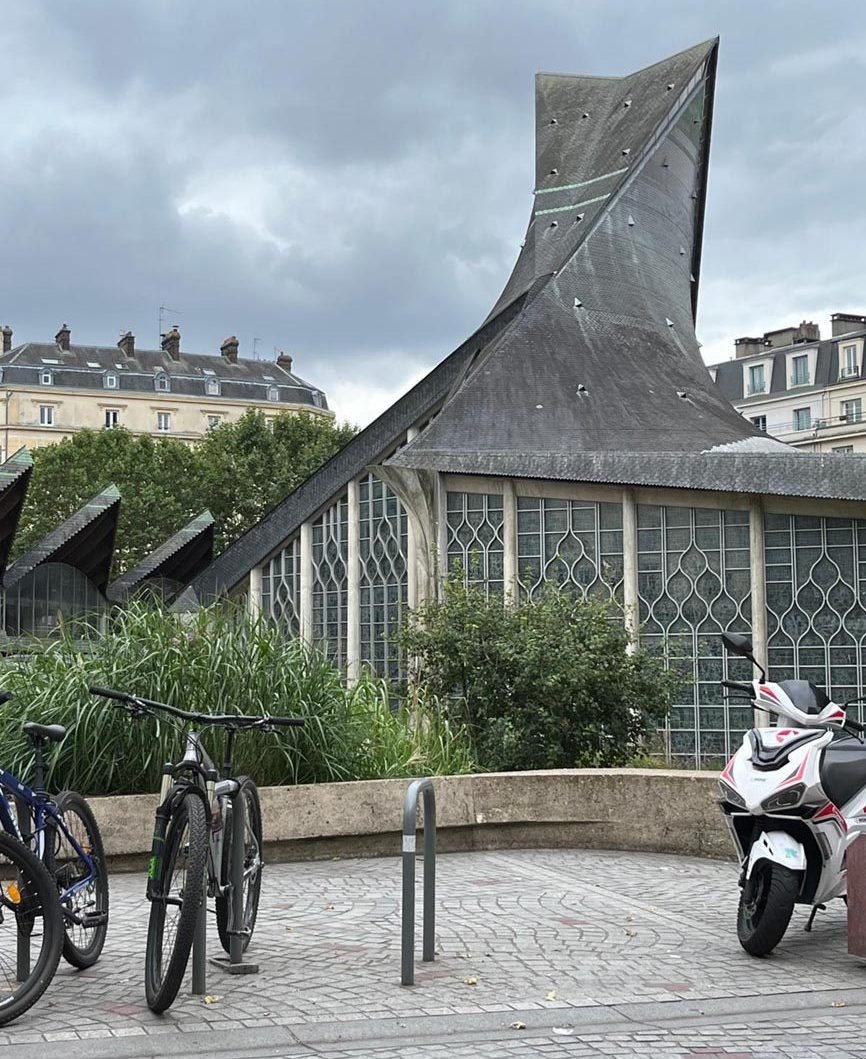

Second City: Vernon and Monet’s Gardens
Vernon is actually just a small commune south of Rouen and it made it onto the itinerary because it was the closest and more economical option to visit Monet’s Gardens. However, the little place surprised me with its Norman medieval architectural style that would accompany us through our travels, the Seine River running alongside, and other beautiful sights such as the Vieux Moulin —iconic!

The drive from our accommodation to Monet’s Gardens was pleasant and quick, but when we arrived, we were shocked by the amount of tourists waiting to enter. Luckily, we had bought the tickets online beforehand, but once inside, it was no different; it was nearly impossible to find a spot without crowds. Consequently, instead of getting any decent photos of the garden themselves, we had to be content with close-up shots of flowers.
Visiting Monet’s house was surprisingly easier, as they restrict the numbers entering and we weren’t so long waiting. In general, the gardens and house are very beautiful and worth visiting. However, refrain if possible going in August, and make sure to buy tickets in advance regardless.


Third City: Mont Saint Michel
From Vernon to Mont Saint Michel was the longest drive on our itinerary: 300 km. We rented a B&B, Maison Jouvenelle, in Pontorson, a village near Mont Saint Michel. Ultimately, we were really happy about the decision to stay here because it’s nearly impossible to find accommodation in Mont Saint Michel itself. This B&B was the best value for money we had during the trip but it was also one of our most pleasant stays. I highly recommend this maison!

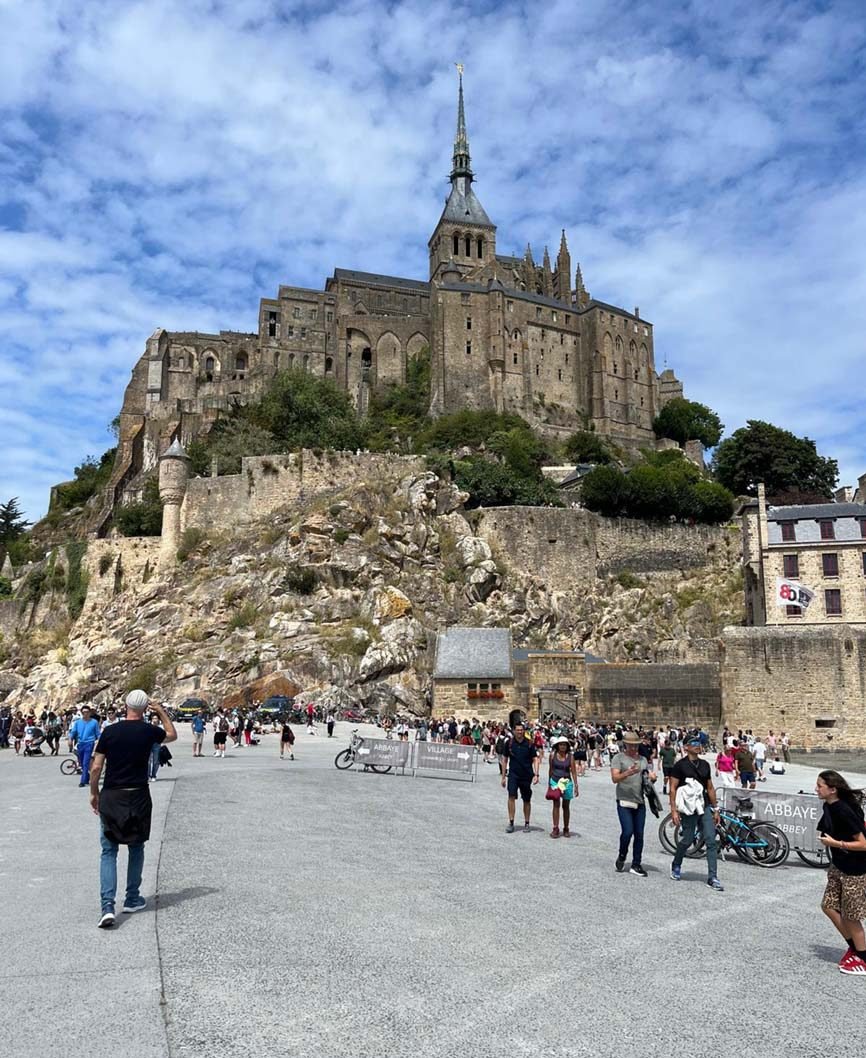
If you only have one day, visit Mont Saint Michel in the late afternoon when there are fewer tourists. Additionally, buy your ticket to visit the Monastery in advance, and be prepared because there are many stairs and inclines. If you don’t have time to visit the Monastery (which would be a shame), just walking through the streets surrounding the peninsula is worth it. Truly, it’s one of the most beautiful places I’ve ever been to.
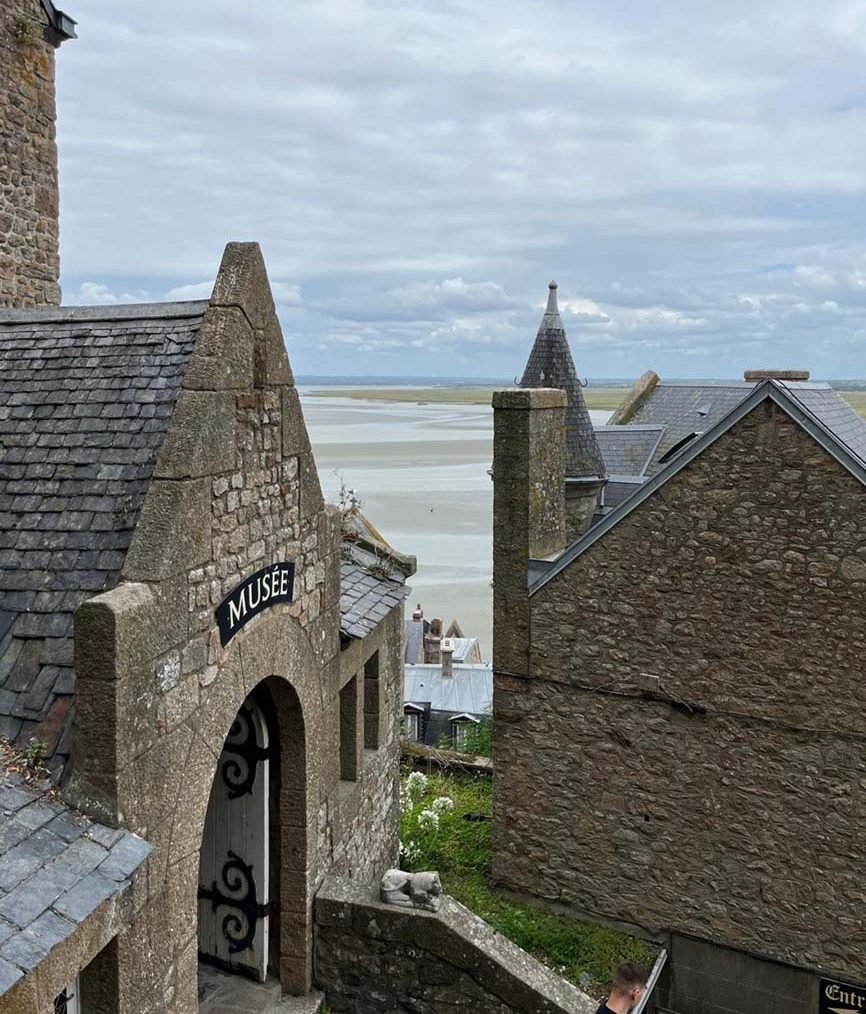

Fourth City: Saint-Malo
Saint-Malo was our only stop in the Brittany region. Although we stayed just one day, it was sufficient to be enchanted by the city. Founded in the Middle Ages, Saint-Malo was an important port and a refuge for privateers, playing a key role in defending the region.
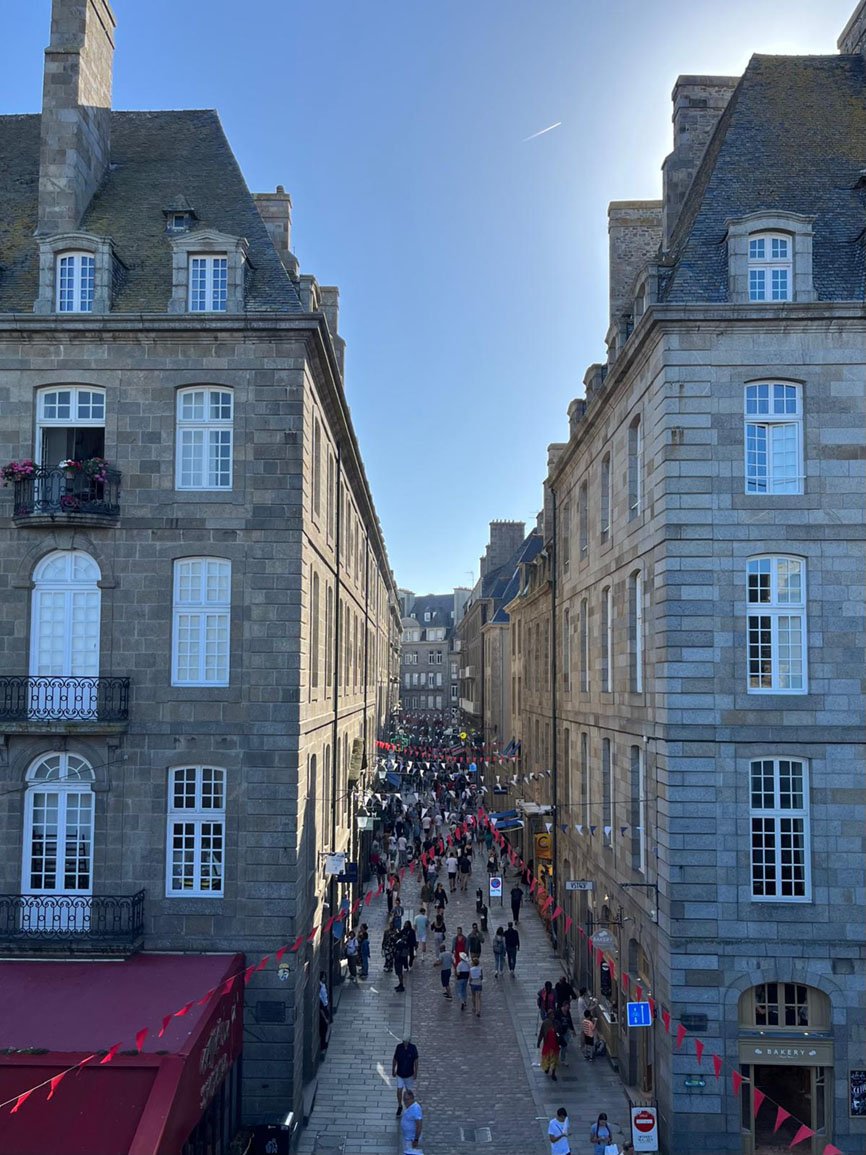
We walked along Sillon Beach, with its elegant Belle Époque mansions, until we reached the walled city, known as “Intra-Muros.” It was an incredible experience walking along the wide wall-walk surrounding the old town, seeing the sea on one side and the vibrant life within the walls on the other. Indeed, it’s a city to discover on foot, full of shops, restaurants, hotels, imposing churches, and museums. Although we didn’t have time, we heard a must see is the Musée d’Histoire de la Ville et du Pays Malouin. We’ll get there again.


Fifth City: Bayeux and the D-Day Beaches
I chose Bayeux for two reasons: the famous Bayeux Tapestry (a UNESCO World Heritage site) and also it would be our base to visit the D-Day beaches from World War II.
On the first day, we saw the Tapestry, and it’s truly impressive. The story of the conquest of England by William “The Conqueror,” Duke of Normandy, in 1066, told in a 70-meter-long embroidery. It’s a war embroidered by many hands to explain the history of this conquest to people who couldn’t read. A work of art preserved for over 1,000 years!

On the second day, we visited two of the D-Day beaches. Yes, they’re are actually five in total. When we arrived at Arromanches-les-Bains Beach, I immediately felt a sad yet “festive” atmosphere of war. Sad, because you can see the remnants of the Mulberry Harbor in the sea: an impactful sight. Additionally, there’s the D-Day Museum right on the seafront avenue. Festive, because this year Normandy is celebrating 80 years of the Allied Victory, and the streets were adorned with the flags of the countries and banners with photos of soldiers who participated in the invasion and battle of Normandy.
We also went to Omaha Beach, where the German bunkers still stand, used only once since the Allies attacked shortly after they were placed. It was an interesting visit, but this one was not festive at all. The raw remnants of the war were there, literally. No houses, no human life on the beach, except for silent tourists.

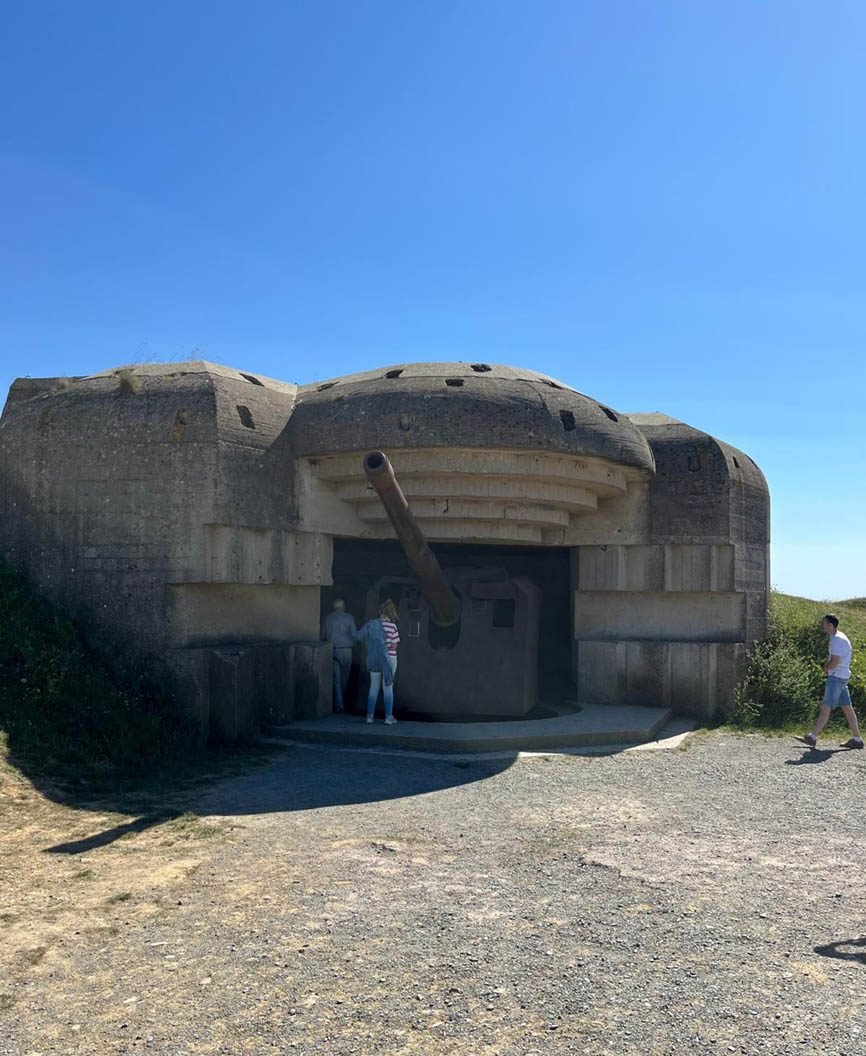
Sixth City: Caen
Caen was a strategic stop to rest a little and visit the Caen Memorial Museum, the largest and most important museum about World War II in France. One of the most bombed French cities during the war, Caen still preserves an important part of its historic center. Here, you can find the ruins of William the Conqueror’s castle, the Duke of Normandy. And two very well-preserved monasteries: the Abbaye aux Dames (Women’s Abbey) and the Abbaye aux Hommes (Men’s Abbey).
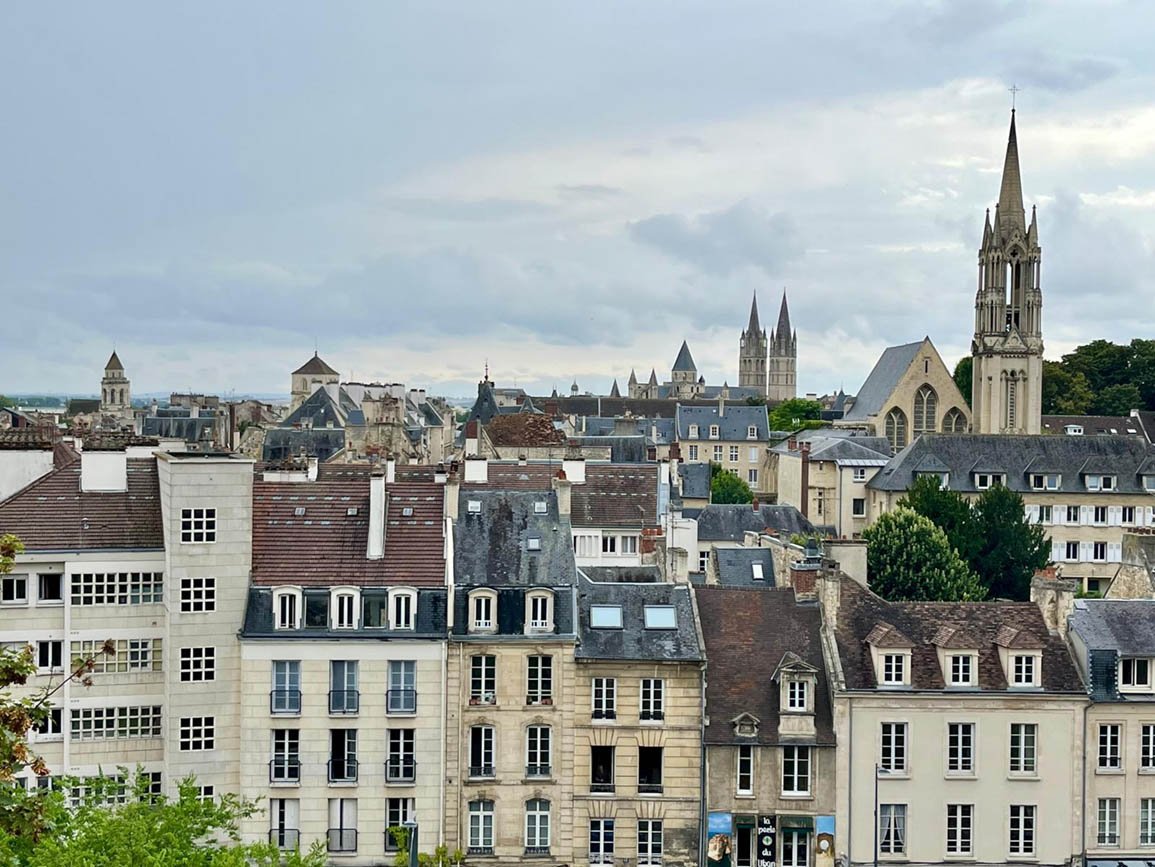
We visited both, spending more time at the Abbaye aux Hommes, which houses Caen’s City Hall, but also hosted two exhibitions: a permanent one telling the story of the bombings of the city and a temporary one about the life of Josephine Baker. Notably, Josephine, American-born singer and dancer who became a French citizen in 1937, Josephine is also known as the first major Black star in the performing arts. She was a prominent figure in the French Resistance against the Nazis and the anti-racist struggle. I was truly impressed by this woman’s story. How come I knew nothing of her before?

On the third day, we visited the Memorial. You need to be physically and emotionally prepared. It covers 14,000 square meters, showing how everything began, from the end of World War I, through the different stages of World War II, the bombings, the deportations and subsequent murders of millions of jews, the resistance, the liberation, through archives, documentaries, and moving testimonies. I left the museum thinking the saddest part is realizing we are still at war. Different, but wars nonetheless.


Seventh City: Honfleur and the Étretat Gardens
After a truly overwhelming experience, we needed to relax. Fortunately, that’s what we found in Honfleur, a charming and picturesque port town from the 11th century. Famous for its old harbor (Vieux Bassin) and its narrow, colorful houses. Historically, Honfleur was an important commercial and maritime center during the Middle Ages and the Renaissance. It attracted numerous artists, such as Claude Monet and Eugène Boudin (born in Honfleur), who immortalized its beauty in their works thus the Musée Eugène Boudin is one of the city’s main attractions.
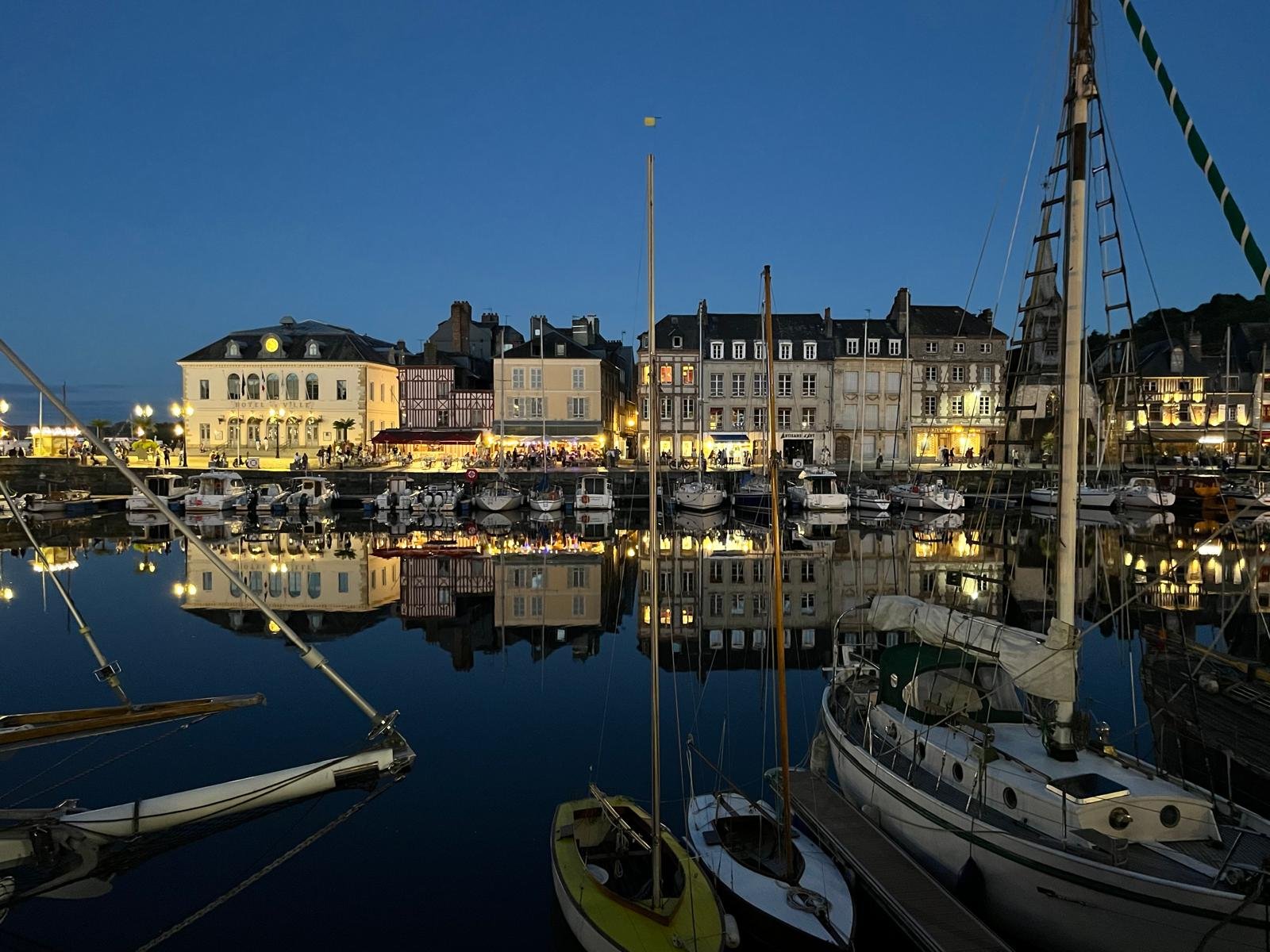

I was impressed by the Sainte-Catherine Church, which, besides being the largest wooden church in France, has a ceiling shaped like an inverted boat hull. A walk to the Notre-Dame de Grâce Church, which offers a beautiful panoramic view of Honfleur, is also worth the walk.
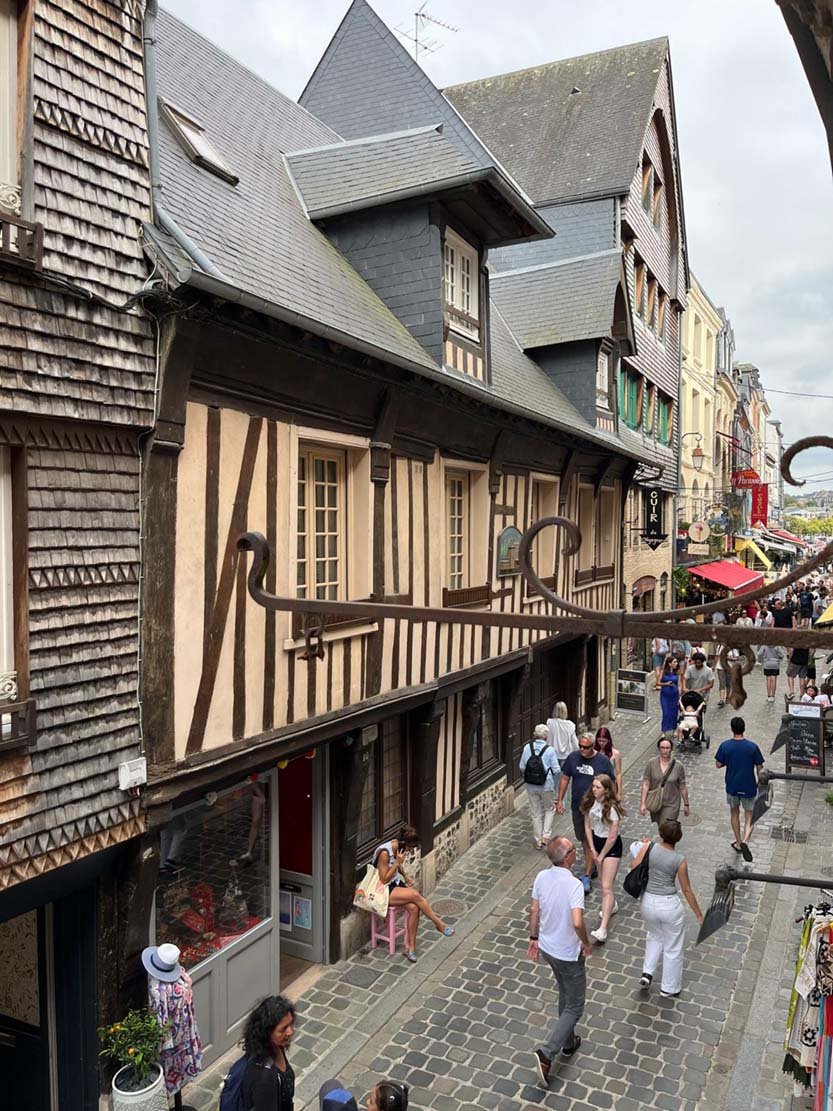

On the last day of the trip, we made a day trip to Étretat. With its wonderful white cliffs, it was also an inspiration for Impressionist painters, and the Étretat Gardens. A huge space of topiary (the art of shaping plants into ornamental forms), architecture, and contemporary art dialogue, with a privileged view of the cliffs.
The project won the European Garden Award in the “Best Development of a Historic Park or Garden” category, and has two Michelin stars in the Green Guide. Additionally, it is listed among the “Great Gardens of the World” and holds the “Remarkable Garden” label. In December 2022, an artist residency program was created to enrich Normandy’s artistic heritage. In fact, it actually reminded me a little of Inhotim in Brazil. Overall, the gardens are worth visiting, although, like Monet’s, I recommend avoiding August.
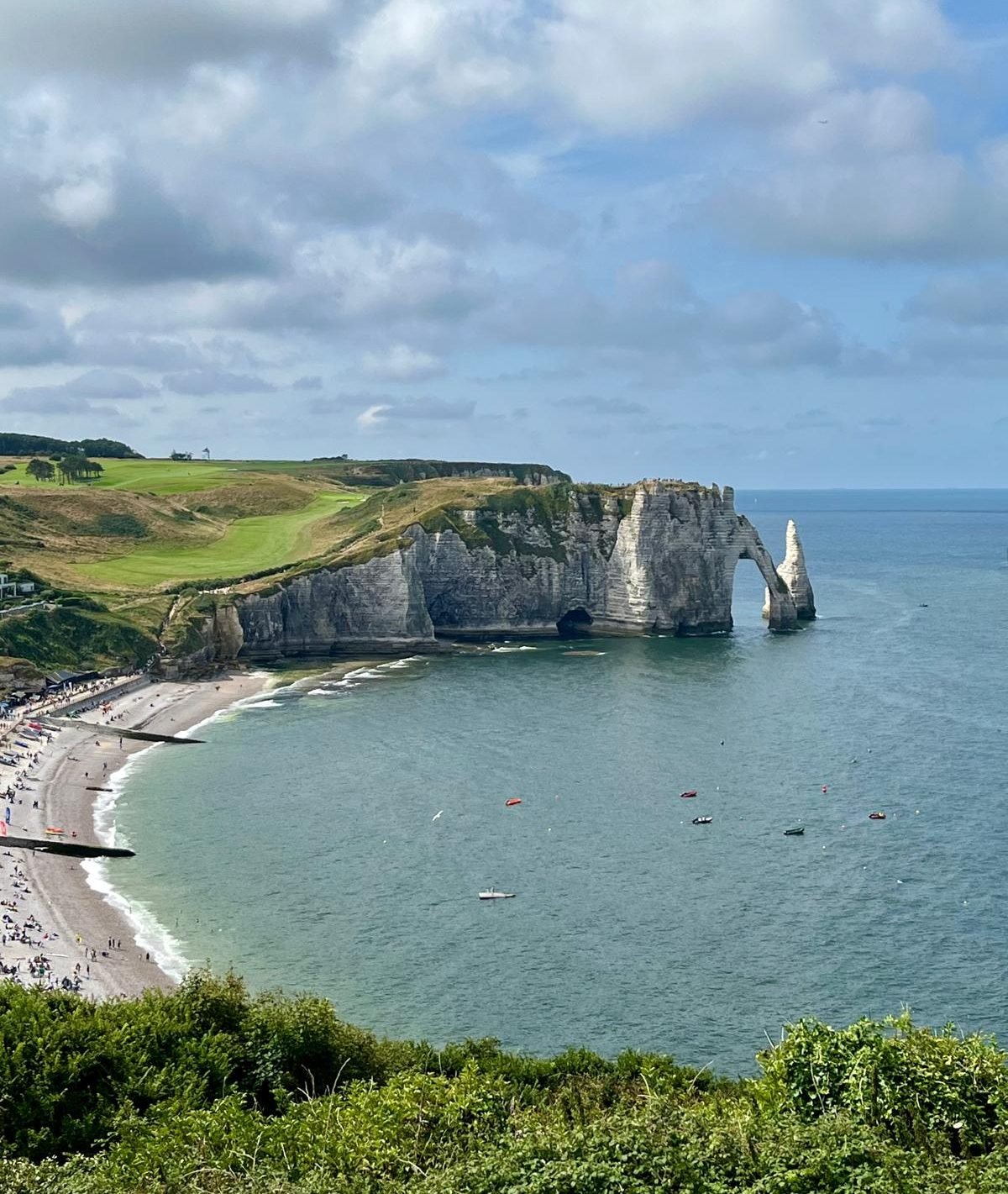

Voilà!
And to conclude this post, one must mention the food! Galettes, a type of crepe that can be sweet or savory, were such a great discovery! They’re healthy, tasty, and reasonably priced and even better if accompanied by a regional cider. Of course, let’s not forget the mussels with french fries and “fruits de mer”: oysters, scallops, and all that delicious seafood that makes you feel like you’re diving into the sea. And here we finish our road trip in Normandy, France: 7 cities in 17 days! Merci beaucoup Normandie!
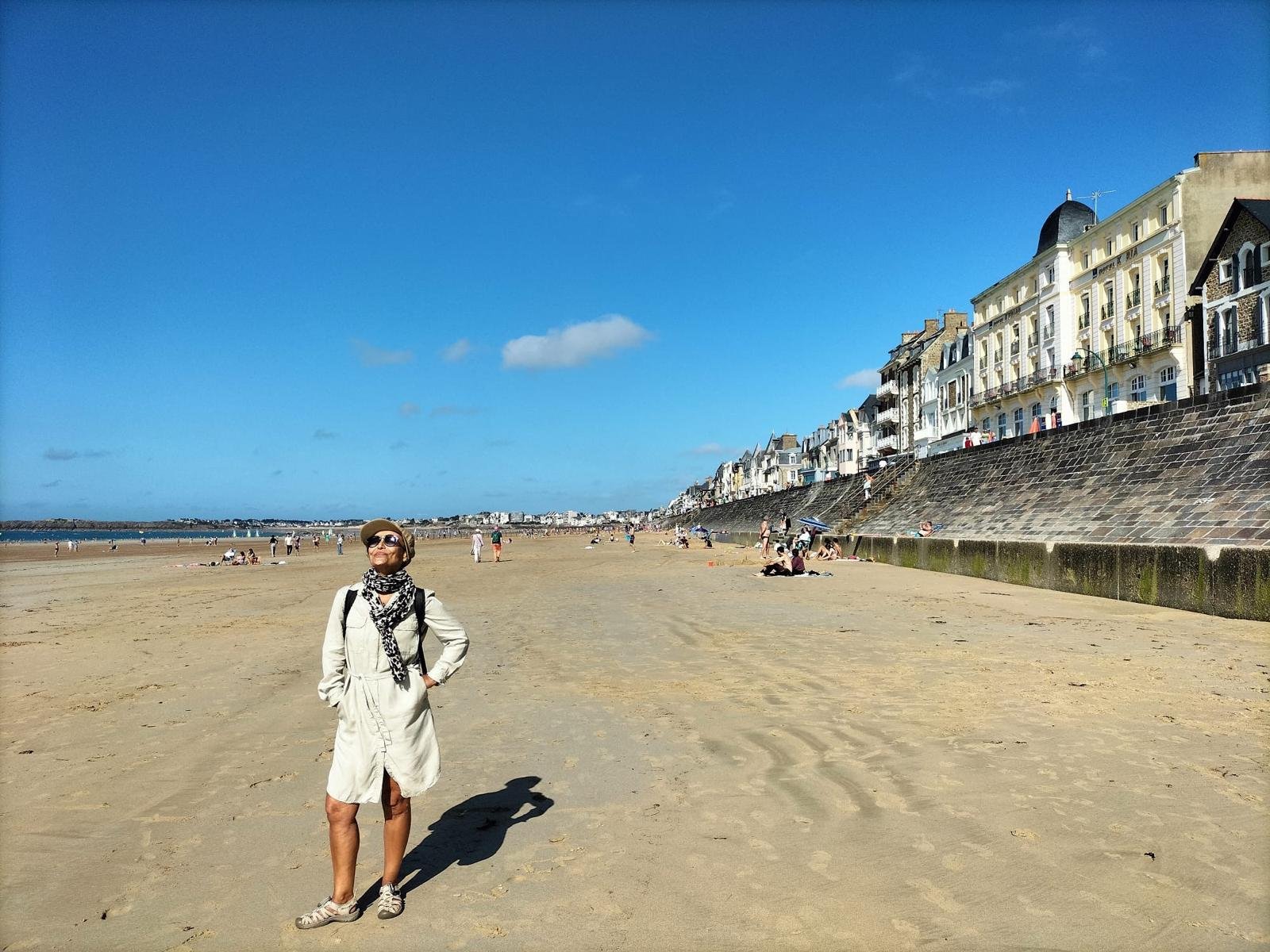


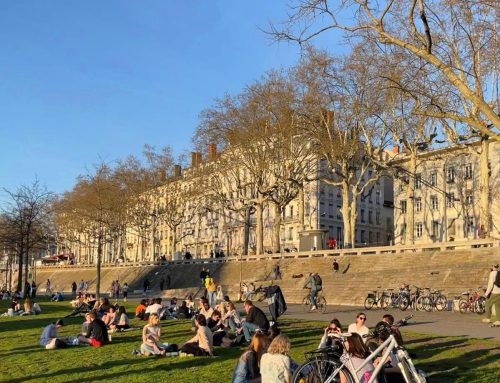


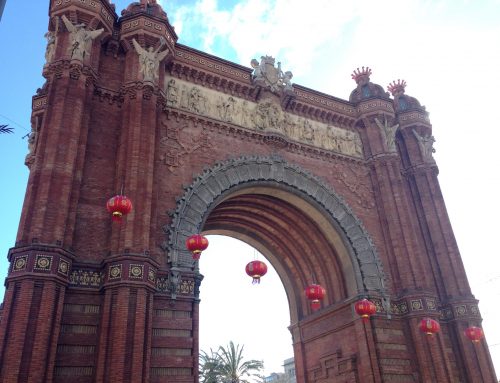
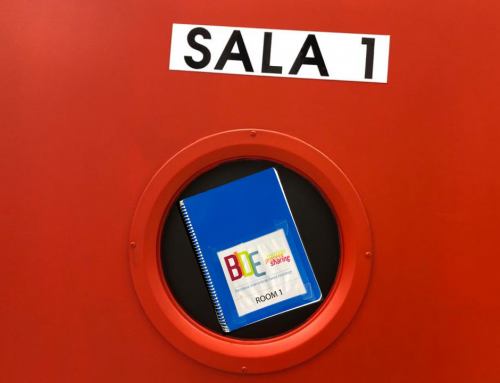
Leave A Comment